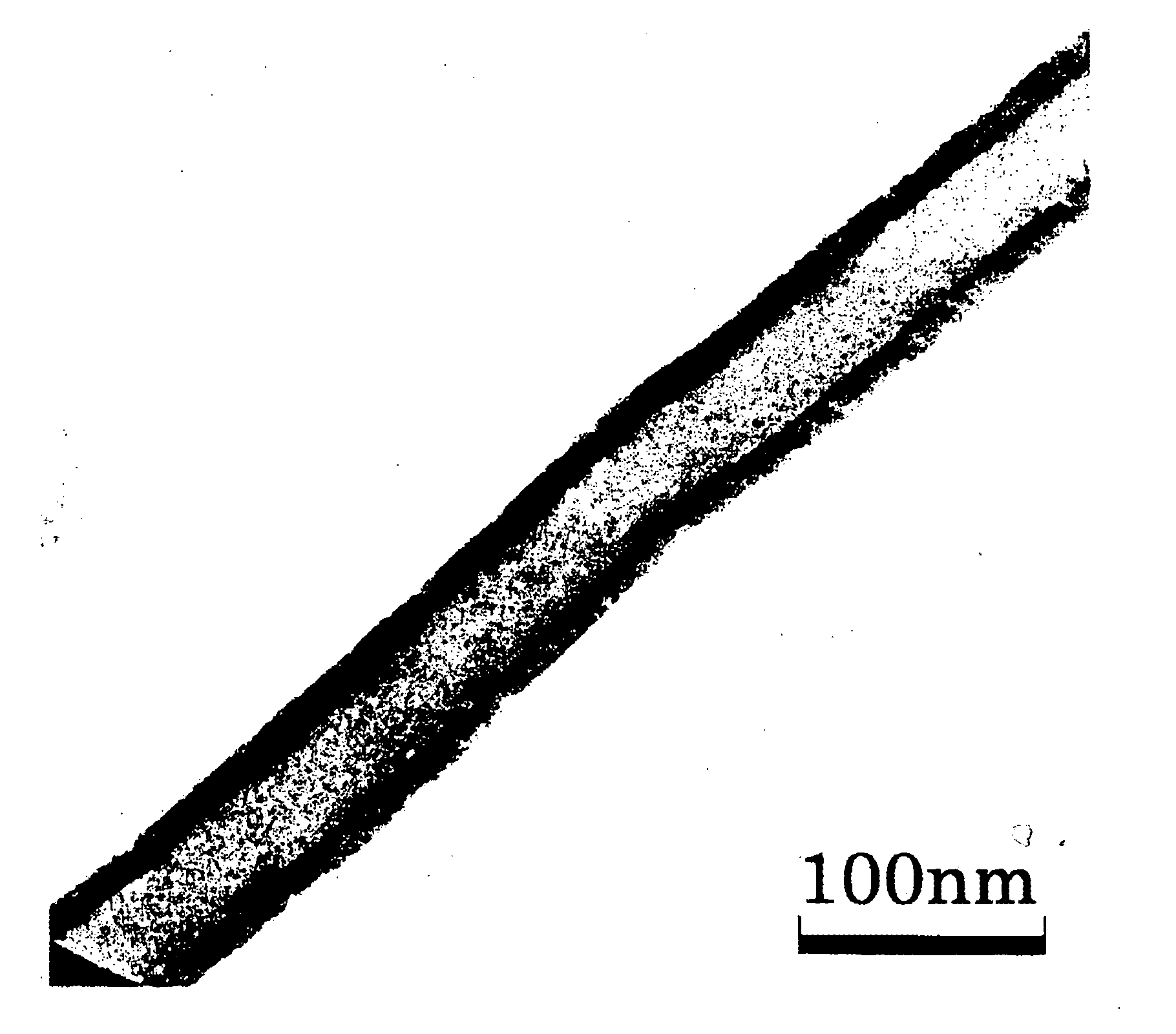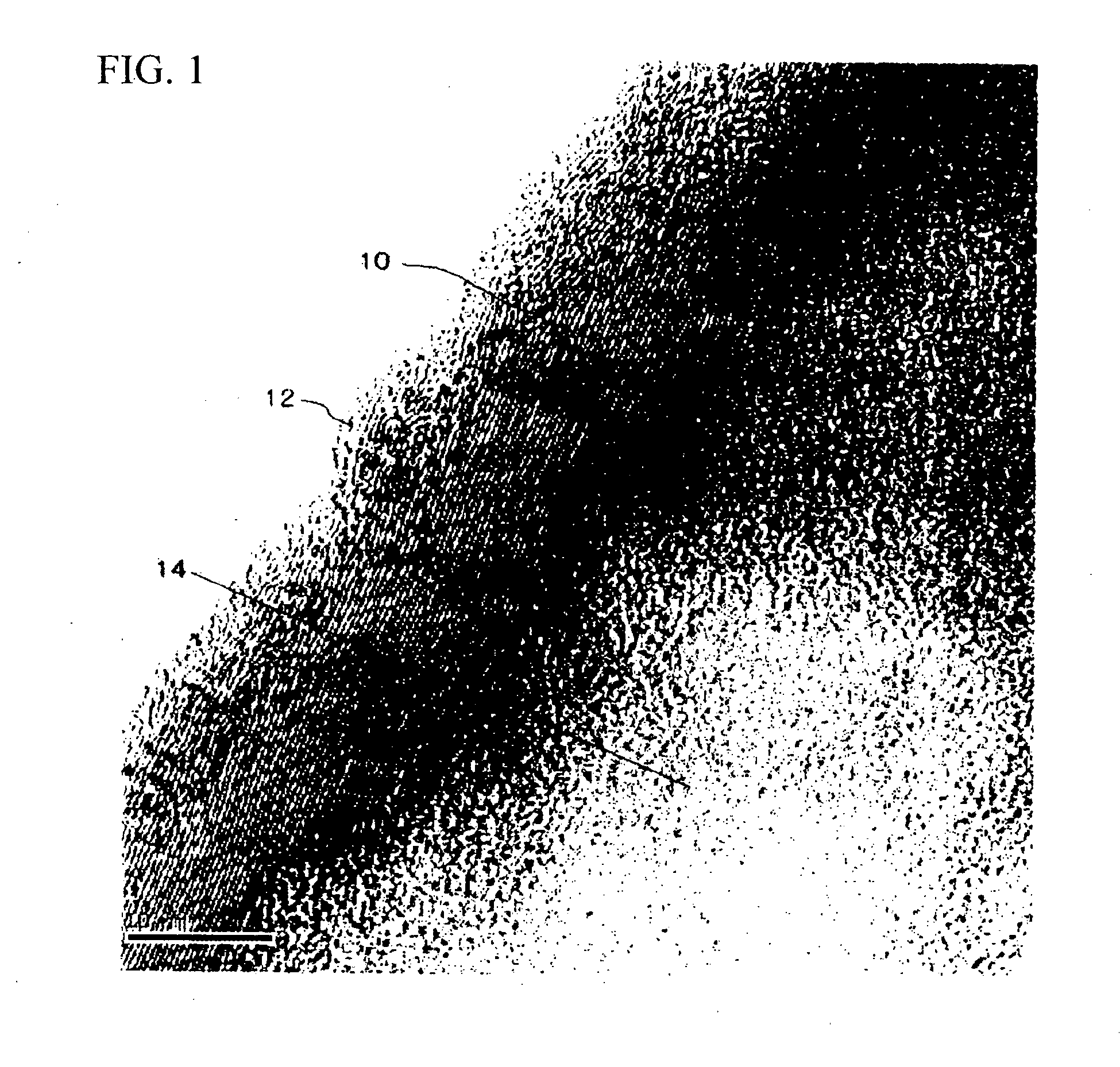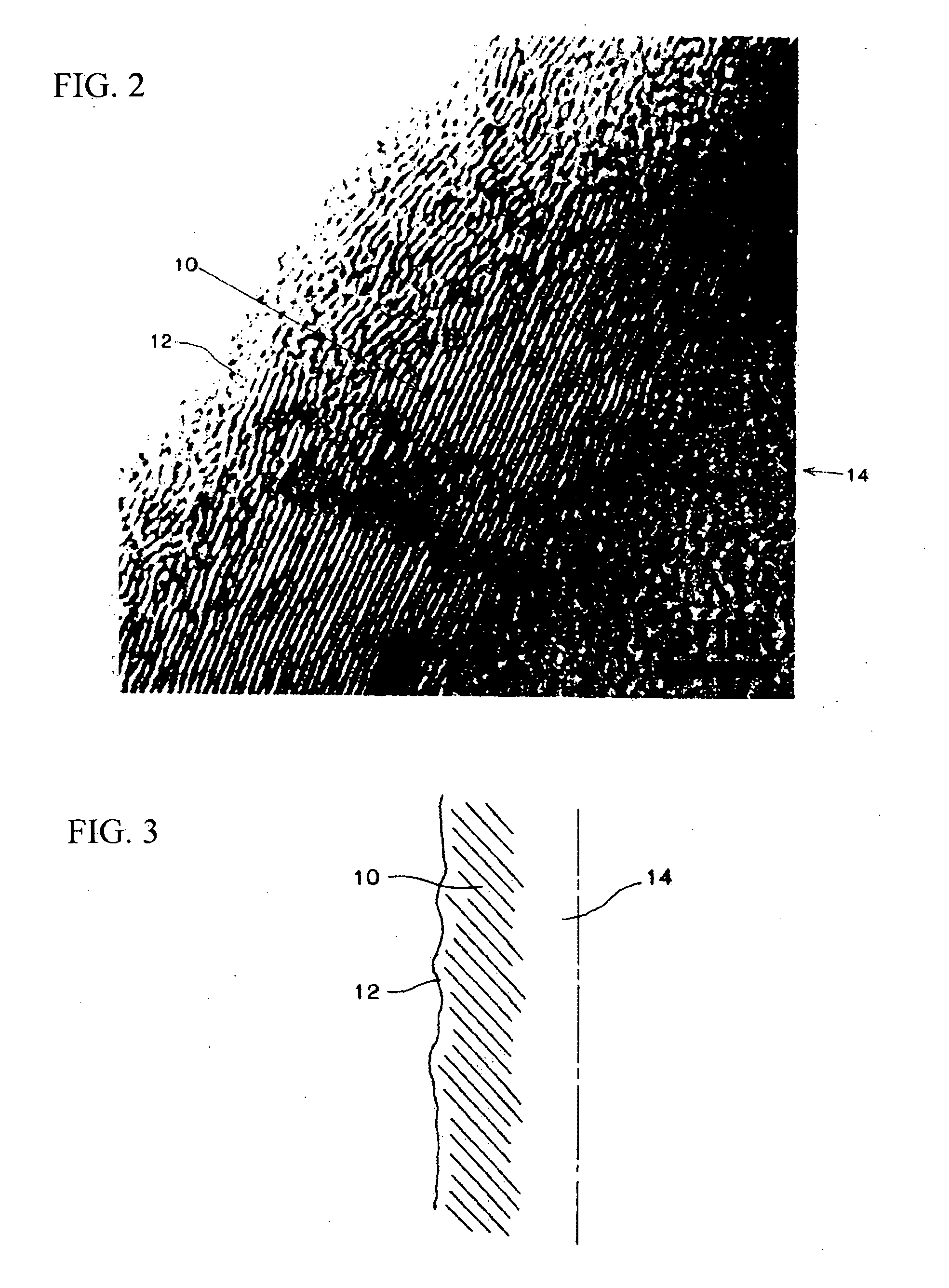Cell culture carrier and jig for cell culture
a cell culture and carrier technology, applied in biomass after-treatment, specific use bioreactors/fermenters, biochemistry apparatus and processes, etc., can solve the problems of difficult purification of animal bodies, disadvantages of substrates (cell culture carriers), and difficulty in mass-culture of cells, etc., to achieve high density
- Summary
- Abstract
- Description
- Claims
- Application Information
AI Technical Summary
Benefits of technology
Problems solved by technology
Method used
Image
Examples
experiment 1
(EXPERIMENT 1)
[0161] The cell culture carrier shown in FIG. 12, in which the cup-stacked type CNTs are three-dimensionally entangled, was accommodated in an cell culture plate (not shown), and a culture solution was supplied into the cell culture plate until the carrier is soaked therein. The culture solution was an ordinary solution, which included 90 vol % of Williams medium E including PSN antibacterial agent and 10 vol % of FBS (fetus blood serum of bovine).
[0162] Liver parenchymal cells of a matured mouse were disseminated on the carrier, the carrier was heated in the incubator, in which temperature was about 37° C. and concentration of a carbon dioxide gas was about 5%, for 24 hours so as to culture and grow the liver cells, so that the liver cells three-dimensionally grew, as multiple layers, in spaces between the cup-stacked type CNTs, which acted as scaffolds of the culture.
experiment 2
(EXPERIMENT 2)
[0163] Cup-stacked type CNTs (sample names: 24-OX), which were heat-treated in the air for one hour at temperature of 520-530° C. so as to expose edges of carbon layers, and cup-stacked type CNTs (sample names: 24-OXSL), which were further ground for one hour by ball-milling, were used. A known culture solution RPM1164, to which 5 wt % of FBS was added, was used.
[0164] Samples were put in conical flask and hot-air-sterilized for four hours at temperature of 200° C. Then, the culture solution was added until concentration of the samples reached 10 g / 1000 ml, and the samples were stored in a refrigerator. These basic solutions were diluted to use.
[0165] Molt-4 (cancerated lymphoblast) cells, which were very sensitive and induced apoptosis, were used as cells to be cultured.
[0166] 24 well microplates were used as incubators.
[0167] The Molt-4 cells were inoculated and cultured in four solutions: (1) no cup-stacked type CNTs were included; (2) concentration of the cup-s...
experiment 3
(EXPERIMENT 3)
[0171] Molt-4 (cancerated lymphoblast) cells, which were very sensitive and induced apoptosis, were used as cells to be cultured.
[0172] The carriers were made of mixed materials including resin, which respectively included 40 wt % and 80 wt % of the cup-stacked type CNTs.
[0173] Culture solutions were serumless culture solutions KBM450 (produced by Kohjin-Bio Co. Ltd.) or RPMI solutions, to which 10 wt % of FBS was added; 24-wellplate incubators were used; number of the cells was 10×104 cell / well; the cells of 2 ml / well were accommodated in each well; and the cells were cultured at temperature of 37° C. and Co2 concentration of 5%. The cells were stained to trypan blue, and their number and survival rate were measured, by a blood cell counter, on the sixth, eighth, eleventh and fourteenth days. The results are shown in FIG. 33.
[0174] In FIG. 33, “Cont” indicates a case of culturing with conventional carrier without using the carrier 118; “40CCC-N-H30” and “80CCC-N-H3...
PUM
| Property | Measurement | Unit |
|---|---|---|
| temperature | aaaaa | aaaaa |
| temperature | aaaaa | aaaaa |
| temperature | aaaaa | aaaaa |
Abstract
Description
Claims
Application Information
 Login to View More
Login to View More - R&D
- Intellectual Property
- Life Sciences
- Materials
- Tech Scout
- Unparalleled Data Quality
- Higher Quality Content
- 60% Fewer Hallucinations
Browse by: Latest US Patents, China's latest patents, Technical Efficacy Thesaurus, Application Domain, Technology Topic, Popular Technical Reports.
© 2025 PatSnap. All rights reserved.Legal|Privacy policy|Modern Slavery Act Transparency Statement|Sitemap|About US| Contact US: help@patsnap.com



